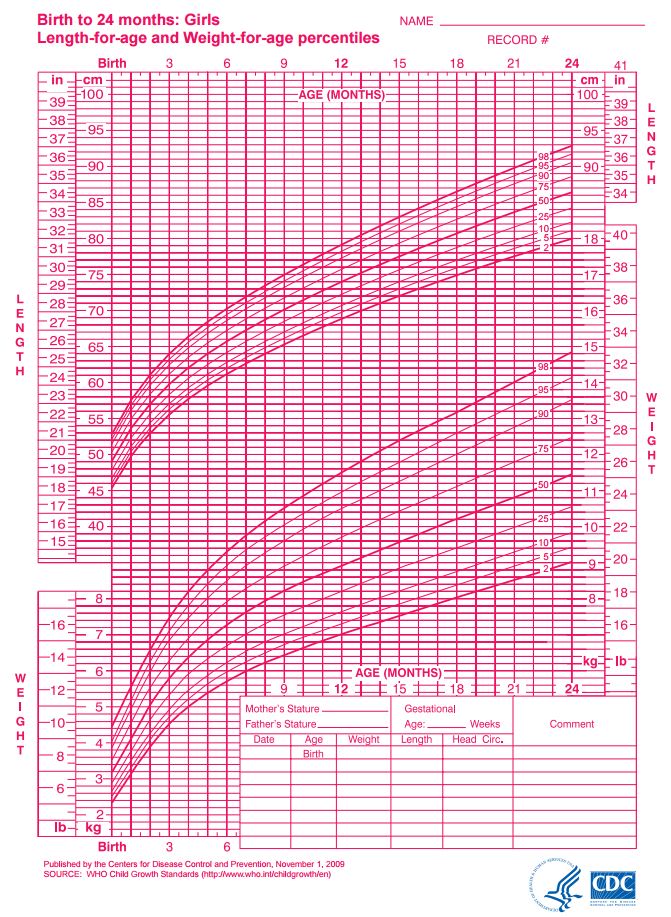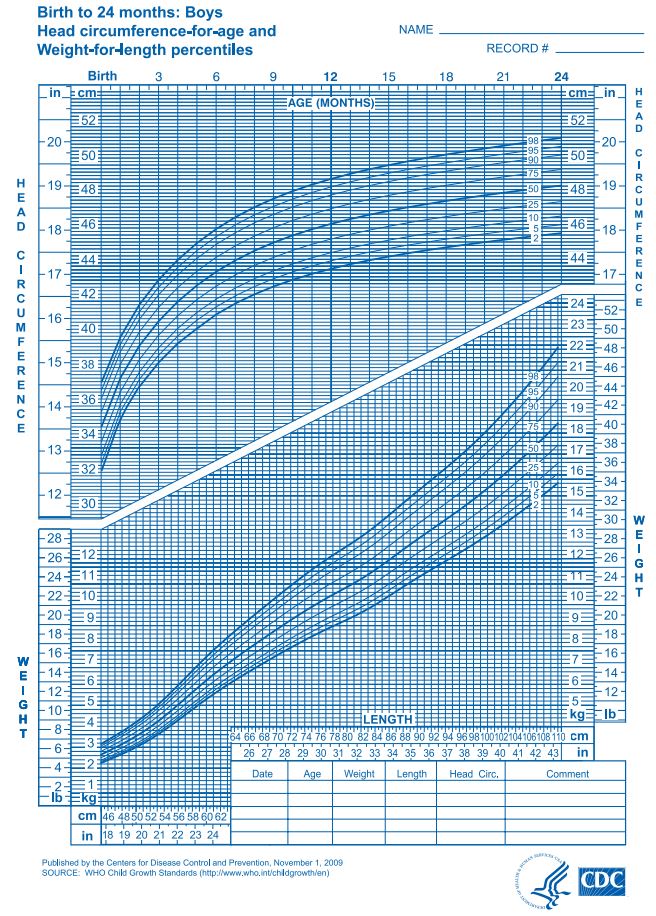Infant Growth Chart
The first time I saw an infant growth chart I felt overwhelmed. Why? Because it seemed very complicated, I didn’t know how to interpret it and it seemed to be telling me that there was something wrong with my beautiful new baby.
The purpose of an Infant Growth Charts
The main purpose of an growth chart is to provide parents and doctors information to assess the health of a baby and to track growth and weight changes over time. There are two main publishers of infant growth charts, the Centers for Disease Control (CDC) and the World Health Organization (WHO). They both have slightly different growth curves. The differences are due to differing sample sizes, differing exclusion criteria and how many exclusively breastfed babies were included.
As of 2010, both the American Association of Pediatricians and the CDC recommends that pediatricians in the USA use the World Health Organization growth chart to assess babies from birth to twenty four months old.
There are four different types of infant growth charts as well. Two charts are for girls (birth to 24 months) and two are for boys (birth to 24 months).
The Four WHO Infant Growth Charts
- Birth to 24 months: Boys Weight-for-length percentiles and Head circumference-for-age percentiles
- Birth to 24 months: Boys Length-for-age percentiles and Weight-for-age percentiles
- Birth to 24 months: Girls Weight-for-length percentiles and Head circumference-for-age percentiles
- Birth to 24 months: Girls Length-for-age percentiles and Weight-for-age percentiles
Is there something wrong if my baby does not fall in the normal part of the curve?
All babies grow and develop at different rates. Many factors will influence whether your baby will fall in the “normal” range. The two primary factors that will effect how your baby measures up are:
- Breastfeeding or Bottlefeeding
- Timing of Growth Spurts
If your baby is breastfed, it is likely that he or she will be on the lower end of the weight range, especially if your pediatrician is using the CDC growth chart.
Why? The WHO chart curves were based on babies that were 100% breastfed at 4 months (the mean age for introducing solids was 5.4 months) and 100% of those babies were still breastfeeding to some extent at 12 months.
Babies do not grow the same amount every day. They tend to grow in spurts. The timing of measurements can make a huge difference. If you measure right before a growth spurt you will think your baby is short / light. If you measure right after a growth spurt you may think your baby is tall / heavy.
Throw Out That Growth Chart!
Instead of being obsessed with your baby’s infant growth chart, pay attention to your baby.
- Is your baby well hydrated? You can tell this by the number of wet diapers you have to change.
- Is your baby’s color good? Baby should be pinkish, not grey.
- Is your baby vibrant? Do your baby’s arms wave around, do your baby’s eyes sparkle? Babies that seem to lack energy or who have a dull or glassy look to their eyes may have some sort of health problem you need to look into.
- Does your baby have at least a little bit of fat around his or her joints? Babies come in all different weights but they should have at least a little layer of fat around their joints. Protruding ribs and / or an indented or bloated tummy are signs that there may be a problem.












New! Facebook Comments
Tell us what you think!